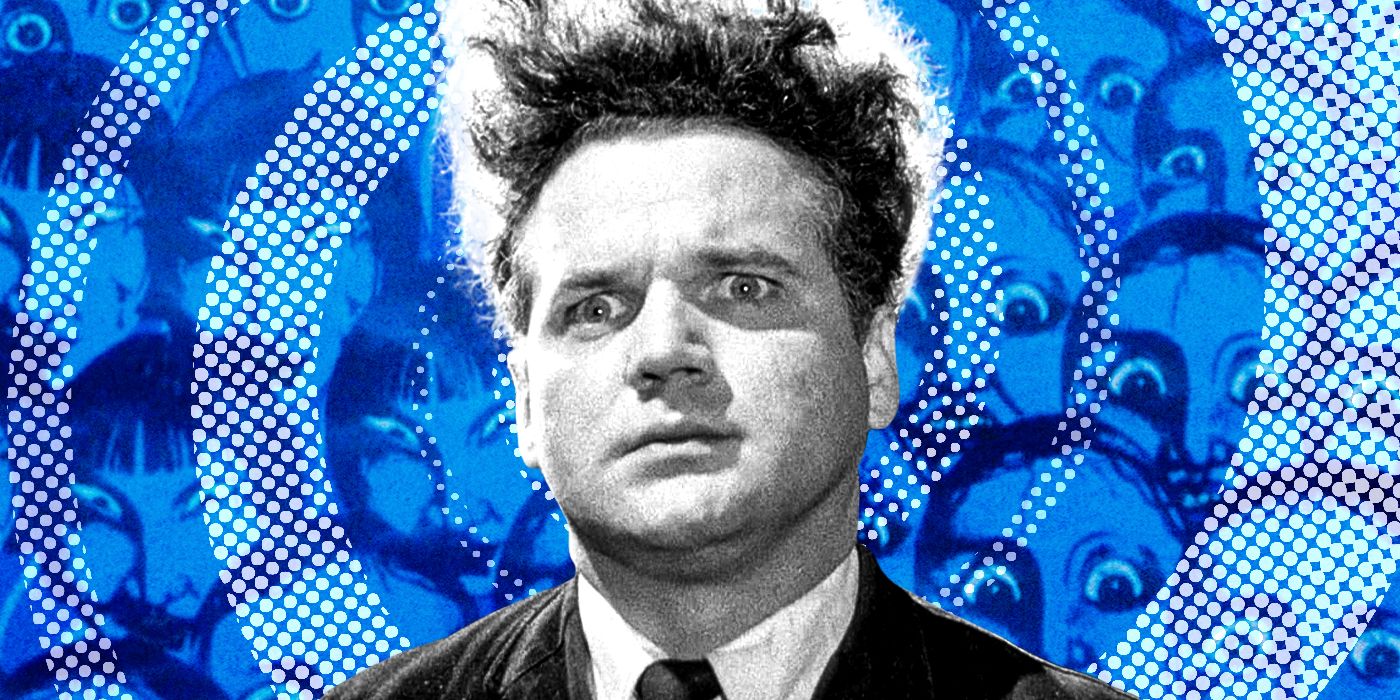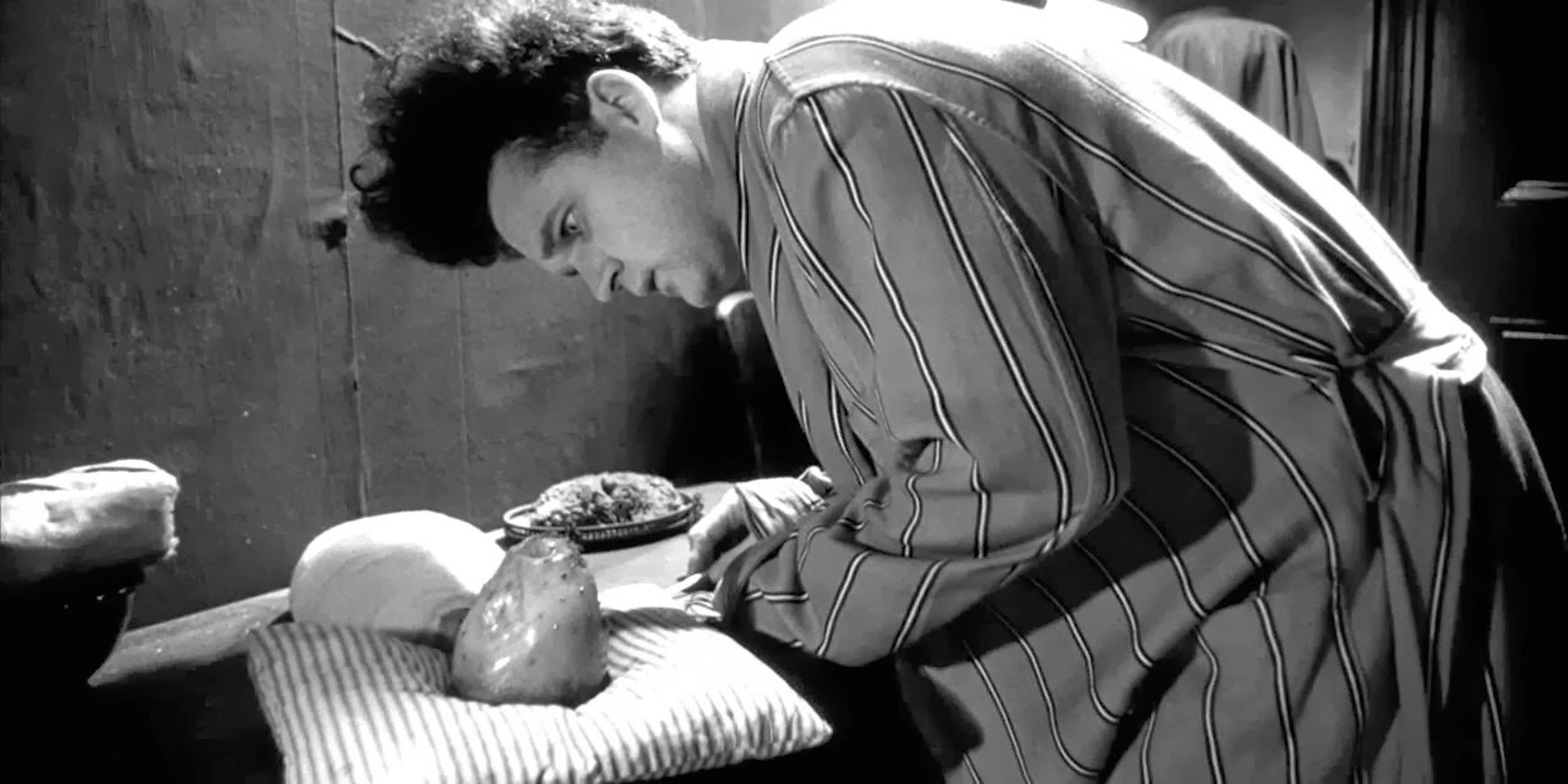The Big Picture
- David Lynch’s debut film Eraserhead is a nightmarish exploration of fatherhood and parental fears, reflecting Lynch’s own subconscious at the time.
- Despite initial frustrations, Lynch’s unique vision and dedicated crew helped bring his strange and surreal world to life on a small budget.
- The film’s distinctive score and cinematography, along with its enigmatic and linear narrative, contribute to its uncomfortable and haunting atmosphere.
David Lynch’s 1977 debut feature Eraserhead is a Frankenstein’s monster of Kafkaesque surrealism, a trauma-inducing interrogation of parental fears and a disturbing depiction of fatherhood. Eraserhead is the nightmarish result of a visionary and obsessive filmmaker. Eraserhead debuted at The Filmex Film Festival without any significant promotion for the film, leaving crowds of moviegoers stunned at the bizarre and feverish nightmare they’d witnessed. The film takes us on a deep dive into the subconscious of David Lynch, and it reflects his place in life at the time of shooting. In the movie, fatherhood and the emotions that tie us to responsibility and family are presented as a trap for the protagonist and focuses on him navigating a fringe land of Lynch’s imagination.
Initially, Fox had funded another project called Gardenback with an investment of $50,000. They had a stipulation that Lynch extend the story into a feature-length script. Despite assistance from writers Gil Dennis and Tony Vellani, Lynch grew frustrated and angry trying to adapt to narrative screenwriting and prepared to throw in the towel. But the studio liked his work and agreed to a future collaboration with the director — the next project would become Eraserhead. The movie was championed by The Pope of Trash John Waters and HR Giger also praised the movie’s artistic merit despite controversy following Alien’s release.
What Is ‘Eraserhead’ About?
Jack Nance portrayed the character of Henry Spencer, a man with a perpetually shocked expression, a funeral parlor suit and a shock of tormented hair. The story opens with Henry floating in space while The Man in the Planet (Jack Fisk) sits by a window, contemplating the universe from a shack on an asteroid before he pulls a lever. We are then offered a view of Henry’s world: severe buildings, concrete corridors, and the ghosts of industry before Henry enters his depressing apartment. Herbert Cardwell’s (who would later be replaced by Frederik Elmes) camerawork is claustrophobic, and it gives the impression of a net closing in on Henry. Visually, narrow hallways, rickety elevators, and the cluttered room Henry inhabits add a thematic depth and visual cues to both the narrative and Henry’s frame of mind. Themes of circumstance and confinement recur throughout. These scenes are accompanied by a dissident score: composed of heightened sounds of industry, animals, and silence. Henry is meeting Mary X’s (Charlotte Stewart) parents: Mr. X (Allen Joseph) and Mrs. X (Jeanne Bates) and they sit down to a dinner of pulsating, gooey chicken before Mrs. X calls Henry to one side. She questions him on his personal relationship with Mary before trying to seduce him. She insists that Henry and Mary X need to get married and pick up their mutant baby from the hospital.
The successive scenes feature Mary feeding the child, overlapping with its animal-like mewling and sounds of heavy rain. Again Lynch relies heavily on stark lighting, external sounds, and Nance’s performance to instill a mood in the viewer: one of dissociative unease and distance while simultaneously being a suffocating experience. Despite the absurdist, nightmarish tone of the movie, Eraserhead’s structure is more simple than Lynch’s subsequent movies/TV shows, wth the exception of Blue Velvet and Wild at Heart. Eraserhead adheres to a pretty linear narrative and doesn’t veer too far from its core story. The plot is straightforward, although opaque (this is David Lynch) in parts, concerning one man’s place in the world and fulfilling a role (or roles) assigned to him by fate. A later dream sequence involving a severed head is where the film gets its title from. The movie was a favorite of renowned film critic Roger Ebert: “The script is a brilliant mixture of narrative and experimental structure that provides just enough storytelling points to give viewers something to hang on to, at least in the early going, before completely subsuming them with its more avant-garde moments later on.”
‘Eraserhead’ Had A Small But Dedicated Crew
The movie had a small but dedicated crew who were committed to making Lynch’s vision a reality. Doreen Small’s production management and props work really emphasizes the strangeness of an ordinary situation via a Lynchian lens. In later work patterned carpets, a suburban aesthetic, and diffuse lighting would become mainstays in several Lynch productions, including Twin Peaks and Lost Highway. During night shoots, if the production needed props, Lynch would go out and sift through garbage until he found what he was looking for. Borrowing money from friends and family often sleeping on the set and working as a paperboy between night shoots, Lynch worked hard and consistently over a five-year period, despite financial constraints and a fractious personal life. The director had to wear many hats to keep the production going. “But of course, he was doing everything except cinematography and sound,” said Charlotte Stewart when discussing Lynch’s work ethic. “He had two other students at the time doing the sound and working camera. I mean David did everything — he built all the props, he painted the set. He lived in the set apparently for some time.”
One of the most distinctive elements of the enigmatic movie is the score. Alan Splet’s sound design and score incorporated real-world noises, heightened and amplified — weaving hissing pipes, distressed animals and industrial discord into the movie. Unlike the dreamlike vocals of future collaborator Julee Cruise or the operatic Angelo Badalamenti, Splet’s dissident score inspires discomfort. Another facet adding an acute strangeness to the film is Frederick Elmes’ shadowy cinematography. Recalling silent-era filmmaking, it lends the film a sophisticated dimension. Most of the preproduction for the film was done at a remote stables that doubled as sound and editing rooms, with Nance and Lynch working on intense rehearsals prior to shooting scenes for the film. Franz Kafka was a guiding influence for the director and he’d use the bible as inspiration during filming.
The Lady in the Radiator (Laurel Near) is the being symbolizing Henry’s repression although Lynch claimed in Lynch on Lynch she was the result of a sketch he had done.
All this would factor into Lynch creating his liminal, nowhere place and secure his legacy in cinematic history.





